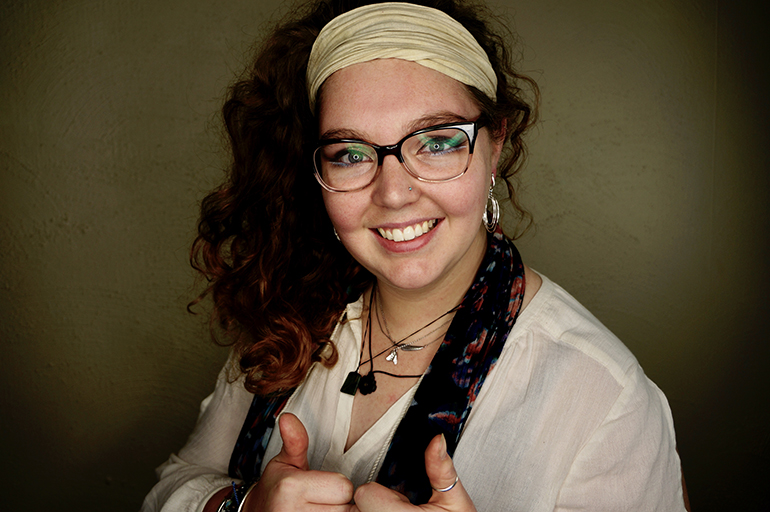Love them or leave them, LEDs are now a certainty when it comes to lighting design. The game-changing LED has made its entry into prime time, as a big part of the 21st-century lighting toolbox. Our ongoing series, What’s Trending: The LED Revolution, is asking lighting folks for their take on the state of solid-state lighting. We started with Clifton Taylor and Tyler Micoleau, and now Hailey Featherstone.
One of our “30 Under 30” talents to watch last year, lighting tech/FOH tech Featherstone has been surrounded by light all her life. Her life has been filled with light from an early age, watching her dad (John Featherstone, principal at Lightswitch) work his magic. Since then, she has transitioned from a successful college design path at Arizona State University under the tutelage of Jake Pinholster, to a successful career, working with artists as diverse as Paul McCartney and Beyoncé, and corporate projects for McDonalds and Mercedes Benz.

By Hailey Featherstone
We all know about the wonders of LEDs. We know them, we use them, and we love them (mostly). I grew up in and came into this industry in the “age of the LED,” so for me, this revolution is the most fundamentally significant technological advancement in the lighting field of my lifetime. LEDs are hip, they’re flashy, and we can make yellow now (kind of...)! I think we can all agree that LED technology has become so omnipresent that you would be hard-pressed to find a rig without any LED components these days, even at high school levels. Pretty impressive for a little diode that only popped into existence some 60 years ago.
I’ve been lucky enough to grow up with lighting design in my life. I always knew not only what it was, but that it was a real deal field of study and a career path. I pretty much always knew what LEDs were as well. When I was 16, I had a “rig” of 16 Chauvet LEDsplash Jrs. and eight American DJ 64P LED Pros (all discontinued… sigh). The first rig I ever worked with, how I figured out color mixing, patching, cueing, was all with LEDs! I was able to bring them to any tiny local venue that my best friend’s band was playing at and plug it all into the wall outlets that they had there. The advent of LEDs made it so I didn’t need anything other than the lights and a basic controller. That was a huge tech advancement within the field, but I was able to do this because I had access to not only the physical components I needed but also to knowledge of lighting design on a basic level. That knowledge allowed me a means of approach to this career path. We often focus pretty exclusively on how technological advancements affect us lighting folks within the field. In this case, I feel it’s important that we explore not just how the LED revolution affects lighting professionals, but how it affects the future of lighting design and the scope of people involved in the practice.
Everyone will forever have a love for gel swatch books. They are not only immensely satisfying to flip through, but they spark interest in everyone that is able to play with them, lighting professionals and the general public alike. There is something very “cool” about being able to manipulate light. Gel, however, and the lighting fixtures associated with its use, is not accessible. Unless your average Joe or Jane are in a field that uses gel, know what it is, what is it called, or where to buy it, they’re not going to happen upon it readily. They certainly wouldn’t have access to a library of it! Your average Joe or Jane will not stumble across gel in a Home Depot, but they will stumble across LED product. With the arrival of “smart bulbs” from the likes of Philips’ Hue, Osram’s Lightify, and even IKEA’s Tradfri, comes an ability for people outside of the sphere of lighting professions to be able to discover how cool light is.
Think of what an impact this will have on the future lighting professionals out there. As soon as they figure out how to use an app, they can change the lighting around them. How will this understanding of light a color manipulation from such a young age change the outlook and design capacity of the LED generation? They can figure out how being in a room that’s color temperature 5500 K makes them feel versus one that’s 2400 K. They can discover how being in a room with red and orange lighting makes their blue walls look, how the colors of shadows change depending on what color the light they’re playing with is. All you need to discover and participate in lighting design is 50 bucks and the Internet. That, to me, is revolutionary.